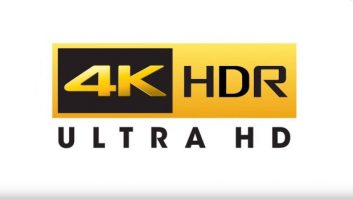
Sales of 4K TV sets will remain low for the next few years, but should begin to take off in 2018, according to new research. The technology is being adopted most quickly in the Asia-Pacific region, particularly China, although ABI Research predicts that the North American market will be the first region to eclipse 5% (in 2017) and 10% (by end of 2018) of TV households with UHD TVs.
“By 2018, more than 6% of households in Western Europe will have 4K sets,” said Michael Inouye, senior analyst (pictured). Despite limited 4K content, a decrease in the price of 4K sets will facilitate the expansion of the installed base through normal upgrade cycles. The report predicts that 4K TVs will account for just over 11% of total flat panel TV shipments in 2018.
“Despite a very limited installed base there have already been a number of 4K trials from broadcasters, pay TV operators, and satellite operators. While many point to the 2014 FIFA World Cup in Brazil and Sochi Winter Olympics as highlights for 4K, these events will have a minimal impact on 4K adoption – it’s simply too early,” he predicted. Supporting technologies like HEVC and HDMI 2.0 will also need time to establish solid footholds in the market.
While there are trials by various European broadcasters, such as Sky Deutschland (which he expects will launch a 4K channel in 2014 or 2015), Sky Italia, Eutelsat, Russia’s NTV+ (which will probably have a UHD demonstration during the Winter Olympics), Hispasat in Spain, and various others shooting 4K content, such as the BBC Natural History Unit and Sky Sports, “there probably won’t be much 4K broadcast for another two years. There just aren’t really enough TV sets.”
While price will be the most critical factor for 4K TV adoption, the advent of OTT services (such as Sony’s Video Unlimited 4K service and Netflix’s newly announced support for 4K in the US), and display features such as upscaling will enable early adopters to bridge the content gap and raise consumers’ valuation of 4K as a TV feature.
Consumers are already conditioned by the mobile market to perceive value in higher resolution screens, with marketing such as Apple’s Retina Display branding the experience, and ABI sees this halo carrying over to 4K TVs. They expect that as new products that support 4K hit the market, such as the next generation gaming consoles from Microsoft and Sony or some Qualcomm Snapdragon 800-based mobile devices, consumer awareness will continue to expand.
“China is the biggest market for 4K right now, and that’s not expected to change anytime soon,” Inouye told TVBEurope. This is mainly because there is a wider range of lower-cost UHD sets available in China, with models as small as 39-inches, whereas in Europe and the US, 55-inch or 60-inch sets are generally the smallest size available in 4K.
“Visually, many people say that 55-inches is the lowest you can go and still get the benefit of 4K, depending on how close you sit, but certainly 40-inches really would be the minimum,” he said.
Practice director Sam Rosen added: “Unlike 3D, which required awkward glasses, 4K has the legs to become an industry norm. This isn’t a sprint, however, and it will take time for the necessary infrastructure, installed base of devices, and content to come together before 4K becomes an integral part of how the typical TV household consumes video content. We expect this could start to happen as early as 2018 in some regions. In the meantime, many consumers will have 4K panels without 4K content, or 4K game consoles without a 4K display, and will claim a superior 4K experience even though the technical merits are not quantifiable.”
ABI’s report (UltraHD TV, 4K STB and HEVC STB Adoption) discusses the current market conditions for 4K from both content and device perspectives and evaluates the potential for 4K TVs and service provider set-top boxes, looking at what broadcasters and operators are doing in Europe, Asia-Pacific and the Americas, and the implications of different technologies, with regional and global forecasts for shipments and market penetration from 2013 to 2018.
By David Fox
www.abiresearch.com







